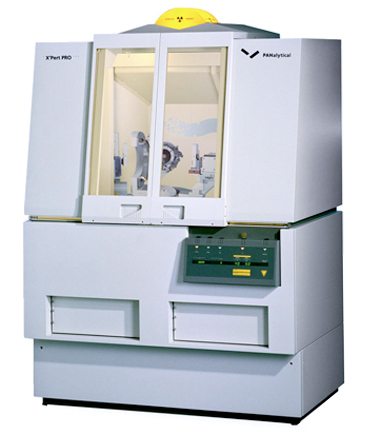
X-ray diffraction is a versatile, non-destructive analytical technique for identification and quantitative determination of the various crystalline forms, known as ‘phases’, of compounds present in powdered and solid samples. Identification is achieved
by comparing the x-ray diffraction pattern – or ‘diffractogram’ – obtained from an unknown sample with an internationally recognized database containing reference patterns for more than 500,000 data sets.
Computer-controlled diffractometer systems use automatic routines to measure, record and interpret the unique diffractograms produced by individual constituents in even highly complex measures.
Results of an XRD measurement are presented in the form of a diffractogram showing phases present (peak positions), phase concentrations (peak areas), amorphous content (background hump) and crystallite size/strain (peak widths).

